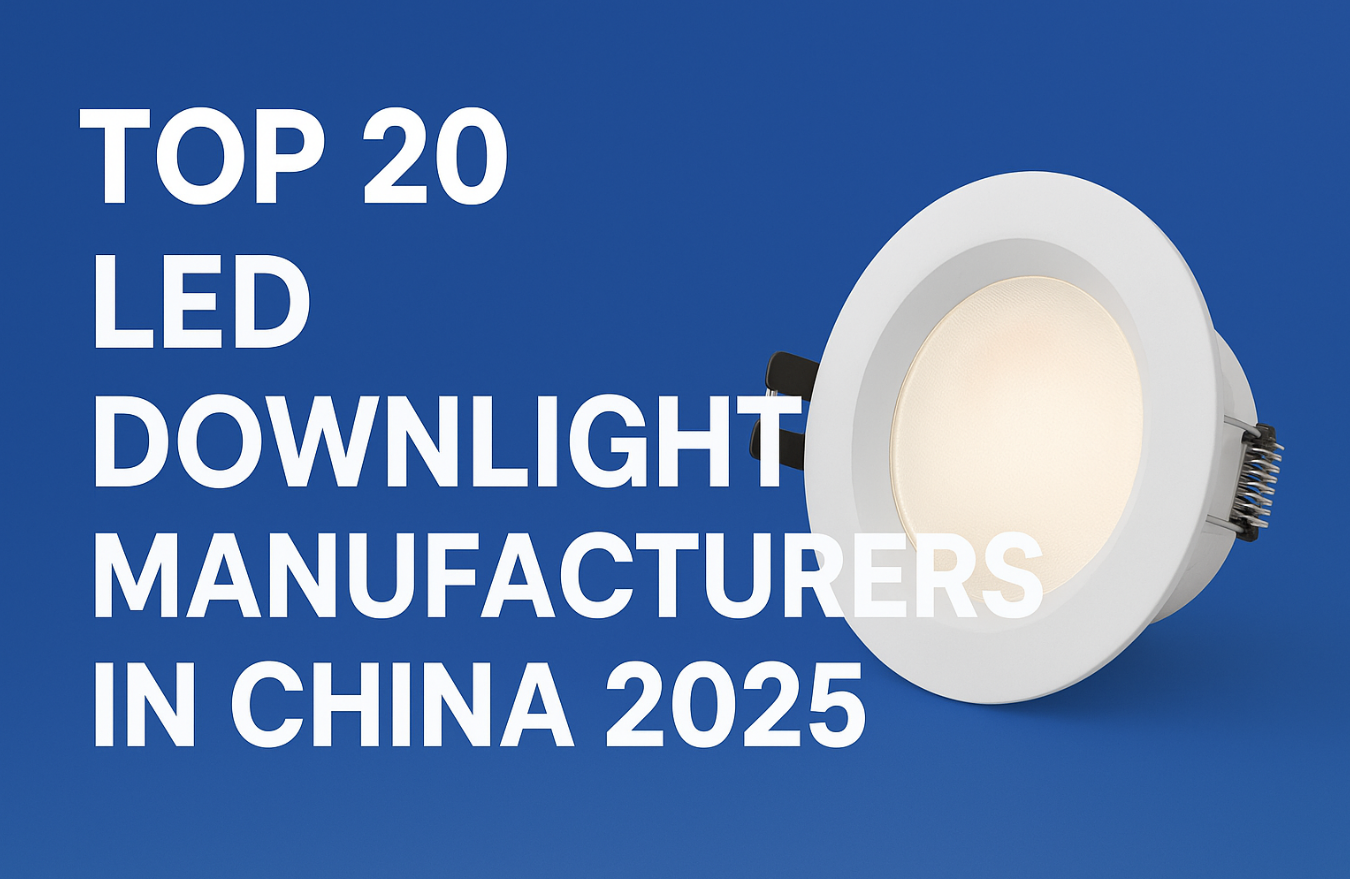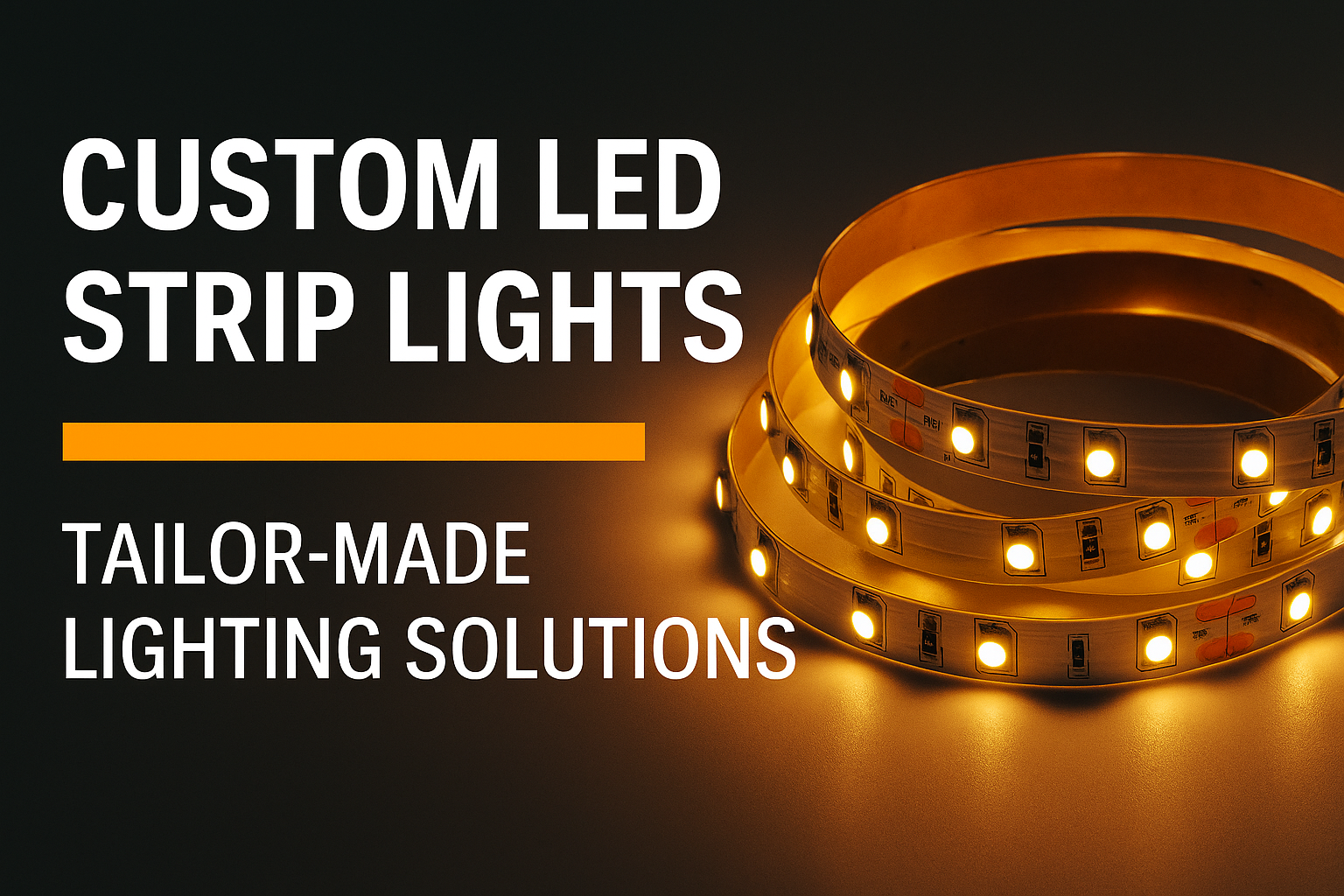
Have you ever been captivated by a building’s spectacular lighting show while passing it by during the night? The exterior lighting is what gives it that enticing glow. But what is façade lighting, precisely, and how do you pick the best kind for a structure?
Facade lighting not only improves a building’s aesthetic appeal but also gives it a sense of identity and draws people in. Given the wide range of options, it might be challenging to know where to start when selecting the best façade lighting for your project.
This article will give you important insights to help you make wise decisions and produce amazing visual experiences with façade lighting, whether you’re an architect, a building owner, or just someone curious to learn more about this alluring lighting approach.
What is Facade Lighting and Why it is Important?

Facade lighting is the practice of using artificial light to draw attention to the exteriors of buildings and draw attention to specific architectural aspects. Lighting design takes into account elements like energy efficiency and environmental effect when deciding where to put lights to best highlight the facade’s texture, form, and color.
The importance of facade lighting involves: First, highlighting a building’s exquisite intricacies and distinctive design. After dusk, architects and lighting designers can bring the structure to life by carefully choosing light intensity, direction, and color. This magical light show can make even the most plain buildings into landmarks, improving a city’s aesthetics.
Second, well-lit iconic structures characterize a city’s skyline. These lit monuments attract tourists, businesses, and investment. Facade lighting creates iconic cityscapes, like the Empire State Building’s dazzling lights or the Eiffel Tower’s mesmerizing radiance.
Third, facade lighting improves security and aesthetics. Well-lit exteriors reduce crime. Pathways, entrances, and parking lots that are well-lit keep people and vehicles safe.
Lastly, facade lighting now uses energy-efficient technologies that promote sustainability and energy reduction. LED lighting fixtures are preferred for their durability, low power consumption, and versatility. Smart lighting controls and sensors allow façade lighting systems to function only when needed, saving energy and maintenance expenses.
Types of Facade Lighting
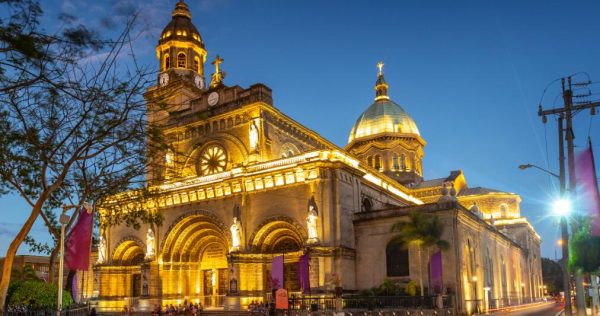
1. Solid Facade Illumination:
Solid facades are typically found on commercial buildings and are constructed of materials like stone, brick, or concrete.
Lighting lights with a narrow beam angle should be carefully placed to provide uniform illumination across the surface. By doing this, light spillage and energy waste are reduced while still emphasizing the texture and architectural features of the facade.
The desired mood can be further enhanced by experimenting with various color temperatures, and choosing energy-efficient LED lights is a smart move for lower electricity use and maintenance expenses.
2. Vertically Divided Facade Lighting
Vertically divided facades of buildings offer aesthetic appeal, and with the right lighting, their impact can be enhanced. Illumination fixtures with narrow beam angles are perfect for accurate and concentrated illumination that highlights each part of the facade.
Spotlights and wall washers, which give depth and texture, can lend drama to the architecture of a structure. The desired ambiance can be substantially improved by selecting the right color temperature, whether warm white for a homey feel or cool white for a contemporary style. Energy-efficient LED lighting lowers operating expenses while promoting sustainability.
3. Horizontally Divided Facade Lighting
When it comes to horizontally divided facades, accentuating architectural features is crucial. For a unified and balanced appearance, uniform illumination can be produced utilizing devices like ceiling lights or strip lights.
Greater surface coverage from wider beam angles prevents dark patches and produces a softer lighting appearance. Warm white or cold white should be chosen depending on the desired ambiance and the style of the building.
4. Perforated Facade Lighting
Perforated facades are a common feature of modern architecture, which allows light to enter through minute gaps or holes. As a result, the building’s façade is embellished with exquisite patterns and shadows.
Architects can manage temperature and natural light by varying the size and layout of the perforations. At night, shining light through the holes can create amazing light and shadow displays.
Specific characteristics can be highlighted by narrow beams, while general illumination is provided by diffuse and homogeneous lighting. LED lights provide several benefits, including lower energy consumption, a longer lifespan, and versatility in producing different lighting effects.
By considering the unique features and effects of each type of façade lighting, you can choose the exterior lighting option that is best for your building.
Choosing the appropriate fixtures, beam angles, color temperatures, and energy-efficient LED lights will assist in highlighting your building’s architectural splendor, both during the day and at night, regardless of whether it has solid, vertically divided, horizontally divided, or perforated facades.
How Should a Facade Be Lit?
When lighting a facade, there are numerous considerations to make in order to achieve the desired aesthetic. Following are some suggestions for choosing and utilizing facade lighting:
1. Recognize the architectural plan: Consider the building’s design, construction, and architectural features. This will make it easier to choose the lighting fixtures and methods that will best complement the entire design.
2. Consider the objective: Determine what purpose the facade lighting serves. Is it to provide dramatic effects, uniform illumination, or to draw attention to certain architectural features? Understanding the objective will affect the lighting choices you choose.
3. Choose the appropriate fixtures: Opt for fixtures that are weather-resistant and appropriate for outdoor use. Choose LED lights that save energy because they are available in a variety of colors and let you produce a variety of lighting effects.
4. Identify the beam angle by taking into account the direction the light will be directed towards the facade. Wider beams provide homogeneous lighting whereas narrower beams are best for highlighting particular architectural aspects.
5. Control light pollution by making sure that light spillage and stray light, which can lead to light pollution, are minimized in the lighting design. To direct the light and stop it from glaring into nearby houses or creating glare, think about installing shields or baffles.
6. Choose the proper color temperature because it has a big effect on the facade’s ambiance and mood. Choose warm or cold white light, or even colored light, depending on the desired impact to go with the architecture of the building and create the right mood.
7. Consider the availability of natural light during the day and incorporate it with facade lighting to maintain a balance between natural and artificial light. To automatically alter the lighting intensity as the levels of natural light change, use sensors or timers.
8. Consult a lighting designer: If you’re unclear about the ideal lighting techniques for your facade, you might want to consider seeking the advice of a qualified lighting designer. They can guarantee the best outcomes and offer professional guidance catered to your unique demands.
You may enhance a building’s architectural characteristics, create a striking façade, and provide the necessary lighting effects by taking into account these factors and approaching facade lighting strategically.
Common Options for Facade Lighting
Wall Lights
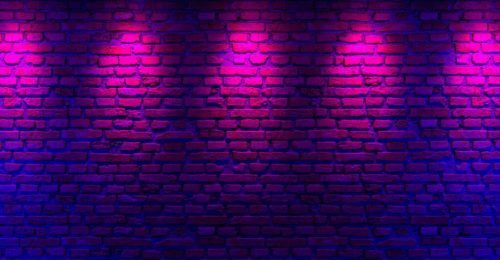
Sconces, usually referred to as wall lights, are a common option for both indoor and outdoor lighting. To give focused illumination and add decoration to any area, these light fixtures are installed on walls.
Wall lights are available in a wide range of patterns and aesthetics, so you can find the ideal match for your interior or outside décor. Wall lights are a flexible and useful option whether you need job lighting in a corridor, accent lighting in a living room, or ambient lighting in a garden.
They can be set up at varying heights and angles to produce varied lighting effects and improve the ambiance of any space, indoors or out. With so many options, it’s simple to discover wall lights that complement your interior design aesthetic and lighting requirements while also adding a touch of elegance.
Ground-Up Lights

Facade lighting options like in-ground-up lights can improve the aesthetic appeal of structures and outdoor lighting areas. Installed underground, these lighting fixtures are pointed upward to illuminate the vertical surfaces of the structure or other architectural features.
Dramatic effects, highlighting certain architectural details, or uniform illumination of the entire facade can all be achieved with in-ground lights. The lighting employed, such as grazing light or narrow beams, can be adjusted to produce the desired appearance.
It is crucial to take into account aspects like the beam angle, color temperature, and energy economy when selecting in-ground up-lights. The distribution of light is determined by the beam angle, while the quality of the light produced is influenced by the color temperature. To decrease light pollution and lower energy use, energy efficiency is crucial.
When choosing in-ground lights, the building’s structure and architectural style should also be taken into consideration. To produce the desired lighting effect, various light fixtures, such as those appropriate for solid or perforated facades, may be needed.
LED Floodlights

For many applications, LED floodlights are a popular lighting option. They have some benefits over conventional lighting solutions and are made to give strong illumination over a large area.
Energy-efficient LED floodlights use less electricity while still delivering brilliant light. Additionally, they last a very long time, which lessens the need for frequent replacements. Since LED floodlights are available in a variety of sizes and designs, they may be used both inside and outside.
Additionally, they enable customizable lighting effects by providing fine control over light intensity and direction. LED floodlights are a dependable lighting option for a variety of lighting needs, including security, outdoor events, and emphasizing architectural aspects.
Ceiling Light
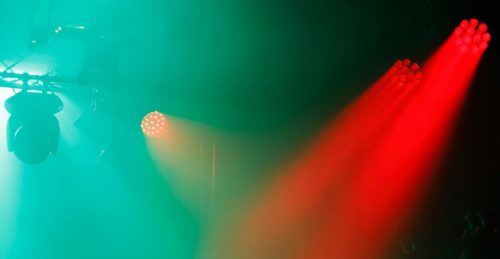
A form of lighting fixture called a ceiling light is mounted on the room’s ceiling. They act as the primary source of light in a space and provide general lighting. There are many different types of ceiling lights, from flush mount lamps that are fixed directly onto the ceiling to chandeliers that dangle downward.
They are frequently utilized to offer general illumination and improve a room’s overall aesthetic appeal in residential and commercial areas.
The size and height of the space, the required amount of brightness, and the style and design of the fixture should all be taken into account when choosing ceiling lights. The type of bulbs utilized and energy efficiency should also be taken into account.
Ceiling lights are adaptable and can be utilized to offer both useful and ornamental illumination in a variety of locations, including living rooms, bedrooms, kitchens, and workplaces.
Choosing the Right Exterior Facade Lighting
Commercial building aesthetic appeal is significantly improved by exterior façade lighting. It acts as a powerful instrument to produce dramatic effects and highlight architectural features in addition to lighting the building structure.
There are various important elements to consider while selecting the appropriate facade lighting.
Recognize the Best Lighting Locations
For façade lighting to be effective, it is crucial to know the optimum regions to illuminate. You can improve a building’s overall visual appeal by purposefully emphasizing particular architectural characteristics and elements. Here are some crucial points to think about:
- Vertical Surfaces: Highlighting a building’s vertical surfaces, such as its walls and columns, can produce a dramatic impression and give the facade design more depth.
- Architectural Features: By drawing attention to distinctive architectural features like arches, windows, or decorative embellishments, the building can become more visually appealing.
- Buildings with perforated facades that have patterned or textured surfaces can be lit to provide unique visual effects and draw attention to the intricate design.
- Solid Facades: A uniform lighting strategy that offers general illumination and improves the building’s form and shape might be beneficial for solid facades.
- Entrance Areas: To direct guests and foster a welcoming ambiance, illuminate entrance areas, including doors, canopies, and signage.
- Landscaped Areas: If the building’s surroundings include any landscaped areas, think about using outside lighting to highlight the gardens, trees, or other natural features.
- Building Structure: To provide a sense of strength and architectural character, emphasize the building’s structural components, such as beams or columns.
By concentrating on these regions, you may develop beautiful facade lighting schemes that draw attention to the distinctive qualities of the structure and alter its appearance.
Keep Away from Copying Natural Light Everywhere
Finding the ideal mix between artificial and natural light is crucial when it comes to facade lighting. Natural light may make a space feel warm and welcoming, but trying to mimic it everywhere might have unfavorable effects.
The problem of light pollution is one of the primary justifications for avoiding mimicking natural light everywhere. Light pollution, which affects not only the environment but also human health and well-being, can be a result of excessive lighting.
Light pollution can be reduced and a more environmentally friendly lighting solution can be made by concentrating on strategic lighting strategies and using the appropriate fixtures.
Consider employing lighting systems that enhance the architectural features and style of the building rather than uniformly reproducing natural light. You may obtain the desired appearance and highlight the distinctive elements of the building by carefully choosing lighting fixtures, color temperature, and beam angles.
It’s also crucial to think about the space’s function and the atmosphere you want to create. Different lighting strategies could be needed for various construction spaces. A conference room might need brighter, more focused lighting for the best vision, while a reception area might benefit from warm, welcoming lighting.
Select the Main Points of View
To generate focus points and increase visual interest, it is essential to identify the main vistas while designing a landscape.
You may guide the viewer’s focus and emphasize important characteristics by carefully placing items like plants, buildings, and features.
When choosing important perspectives, take into account elements including the space’s intended use, the site’s natural flow, and the desired visual hierarchy. This will produce more aesthetically pleasing and harmonious landscape light designs.
Conclusion

In summary, façade lighting is extremely important for improving the aesthetic value and architectural style of commercial buildings.
Building owners can produce dramatic effects and emphasize particular architectural features by choosing the proper lighting fixtures, color temperature, and lighting strategies.
It is crucial to think about the lighting solution’s energy efficiency and select fixtures that offer uniform illumination without contributing to light pollution.
The final decision about exterior lighting should take into account the owner’s requirements and preferences in addition to the overall building design.


